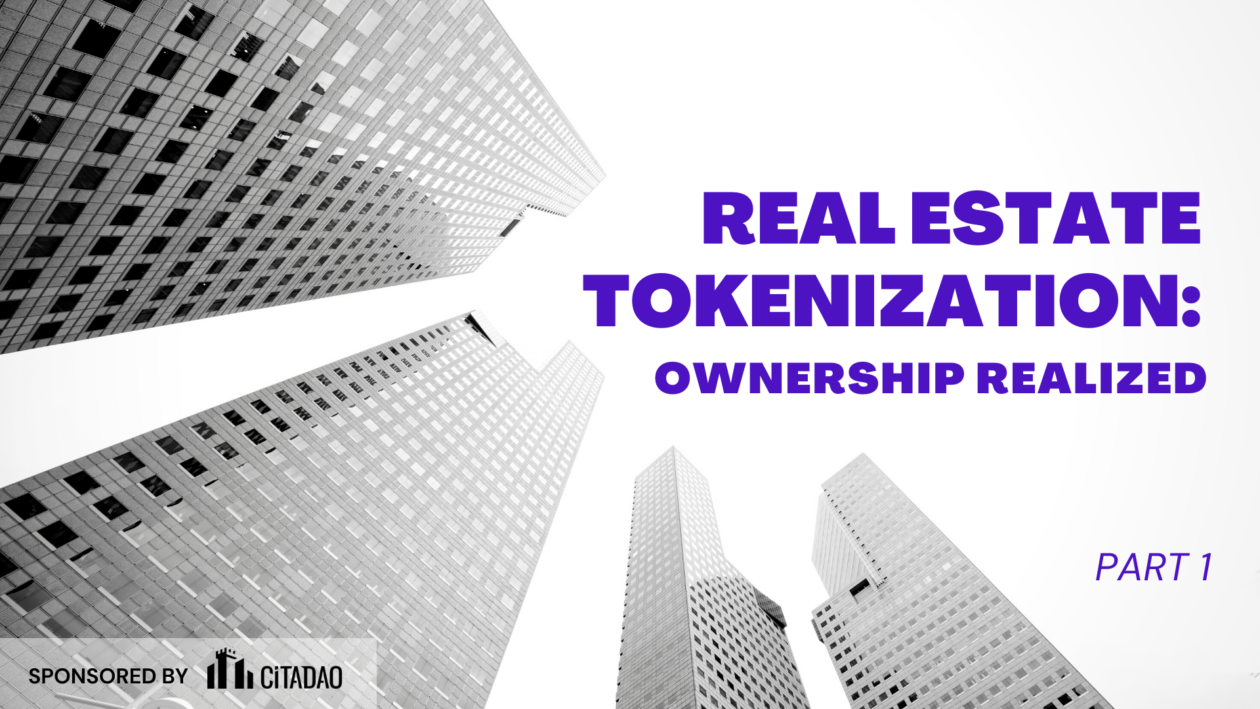This is the first article in a special Forkast series, Real Estate Tokenization: Ownership Realized. Learn more about this series here.
It’s debatable exactly when the term “tokenization” entered the digital asset lexicon, but it may come as a surprise to some to learn that the origins of the phenomenon in its current digital form lie in a data security system put in place in the U.S. to protect credit card data almost 22 years ago.
In 2001, payments firm TrustCommerce introduced a system that replaced credit card information stored on local servers, which was relatively poorly protected and therefore had exploitable value, with tokens — strings of randomized numbers — which vastly improved data security because they had no value of their own.

And the roots of tokenization go back further than that: Think of casino chips and physical coins, and you’ll get the idea — tokens of value that have no inherent worth, but which can be exchanged for items with real-world value.
Blockchain-driven utility
Tokenization in the digital asset industry is a direct outgrowth of these representations of value, but with turbocharged utility thanks to blockchain technology and smart contracts.
A core function of tokenization in the digital asset space — and specifically the decentralized finance (DeFi) industry — is making illiquid assets liquid and therefore readily exchangeable, leading to an increase in their value.
The variety of assets that can be tokenized in DeFi is practically limitless, ranging from artwork to sports teams, from financial products such as bonds to real estate, which, as this series of articles will show, is one of the ripest asset classes for tokenization.
At this point, one might be forgiven for experiencing a sense of déjà vu: After all, didn’t the last time that illiquid real estate was made highly liquid through the use of financial instruments end badly, in the form of the global financial crisis?
The answer is yes, and at the root of the crisis was a process that bears some similarities to tokenization: securitization — the bundling and sale of real estate-related assets (mortgages, specifically) as financial assets.
But conflating DeFi tokenization with securitization, despite the parallels between them, would be a gross oversimplification, as the differences between the two processes are vast.
At the most basic level, the fact that DeFi tokenization is based on blockchain removes many of the inbuilt weaknesses of securitization.
Superior to securitization
The immutability of blockchain transactions and the fact that DeFi tokenization utilizes smart contracts offer a level of transparency almost entirely absent in the processes by which real estate-linked assets were securitized and sold as investment products in the run-up to the financial crisis.
Unlike securities, tokens can be traded in fractions — the Ethereum-based tokens used in much asset tokenization can be traded in fractions of up to 18 decimal places, for instance — offering investors holdings of any size and opening up market opportunities for even those with the smallest amounts of capital.
Also unlike securitized assets, tokens allow their holders to exercise a measure of control over decisions related to the administration of their investments through means such as votes.
Tokens confer a stake in future cash flows from the underlying assets, they can be held directly by investors in digital wallets without the need for third-party custodians, they can be traded 24/7 with rapid, real-time low-cost settlement, and they can automate regulatory compliance.
In addition, tokens differ from traditional securities insofar as the transparency they afford in relation to investors’ holdings facilitates more accurate price discovery. This comes thanks to their reduction of the problem of asymmetric information between parties — a disparity that was laid bare in the most brutal fashion during the financial crisis, when investors learned the hard way that they had been sold assets that the sellers of those assets themselves derided as worthless.
In short, the unique, blockchain-linked features of DeFi tokenization appear to go a long way toward addressing the failings of securitization, and among all of the asset classes to which it can add value, real estate stands out as perhaps the biggest beneficiary.
In the series of articles that follows this one, Forkast will explore what DeFi tokenization means for real estate investors and owners, and for the industry overall, as we look at what could be the biggest shakeup in property asset ownership and management in generations.





